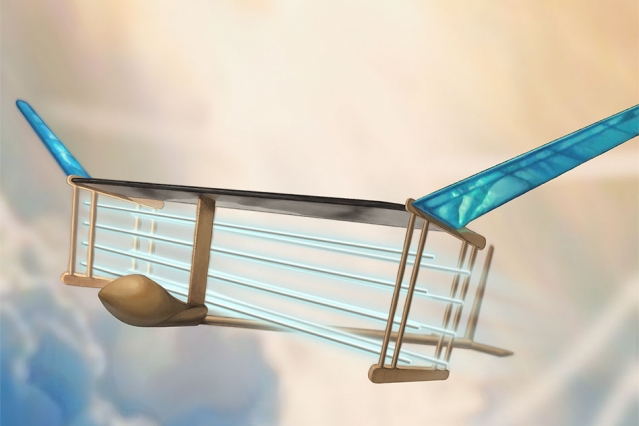
Airplanes have been with us for more than a century and they fly with the help of propellers, turbine blades or fans that noisily move them through the air. Recently, MIT engineers have built and flown a plane with no moving parts.
Instead of propellers or turbines, the new plane is powered by an “ionic wind”, which is a silent flow of ions produced aboard the plane that generates enough thrust to propel the plane in sustained, steady flight.
The plane makes use of the principle of electroaerodynamic thrust. That principle was first described in the 1920s and refers to a wind or thrust that is produced when a current is passed between a thin and a thick electrode. If enough voltage is applied, the moving air between the electrodes can produce enough thrust to propel a small aircraft.
The MIT plane is a large, lightweight glider. It is powered by a stack of lithium-polymer batteries and a specially-designed power supply that converts the batteries’ output to a sufficiently high voltage to propel the plane. The first test flights were inside a gymnasium at MIT, so the flights did not exactly cover much territory. But the sustained flight demonstrated the basic principle of ionic wind flight.
There is a long way to go before such technology becomes practical. It needs to be more efficient, fly far longer, and fly outside. Outside of drone and other small applications, it is not clear how much ion wind propulsion could influence the future of aircraft propulsion, but it is fascinating to see a plane fly through the air in sustained fashion with no moving parts involved in its propulsion.
**********
Web Links
MIT engineers fly first-ever plane with no moving parts
Photo courtesy of Christine Y. He / MIT.
‘A Plane With No Moving Parts’ from Earth Wise is a production of WAMC Northeast Public Radio.
Surprisingly, the MIT ion propelled glider was NOT “the first ion propelled aircraft of any kind to carry its power supply,” as MIT claims in Their paper and video. The real first such device in history to carry its onboard power supply is called the “Self Contained Ion Powered Aircraft.” It is protected by US Patent 10,119,527, that has been in effect since 2014. It has a far higher power to weight ratio and efficiency level, than the MIT glider. You can find more than ample substantiation for these facts on google. It is about carrying a power supply with ion propulsion, not size. (A much larger externally powered craft was tested by the Japanese in 2003.)
http://www.electronairllc.org